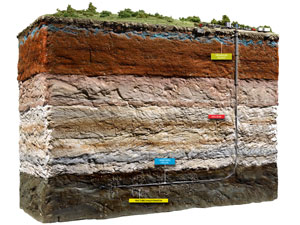Employers in the United States must verify that new hires are eligible to work in the U.S. This responsibility was created by the Immigration Reform and Control Act (IRCA) of 1986, which drafted employers—on pain of being prosecuted themselves—into partnership with the federal government to deny job opportunities to unauthorized workers. Employers' compliance responsibilities are based on use of the I-9 Form ("Employment Eligibility Verification") issued by U.S. Citizenship and Immigration Services (USCIS). As information technology develops, USCIS has expanded electronic reporting and data management tools, the most important of which is called E-Verify. Both I-9's and E-Verify continue to evolve, and have received recent revisions.
Audit, Compliance and Risk Blog
Jon Elliott
Recent Posts
Tags: Corporate Governance, Business & Legal, Employer Best Practices, Employee Rights, Workplace violence, Internet
OSHA Proposes Expansion of Occupational Injury & Illness Reporting
Posted by Jon Elliott on Mon, Dec 02, 2013
The Occupational Safety and Health Administration (OSHA) requires employers to prepare and maintain records of occupational injuries and illnesses (I&Is), and to provide employees with annual summaries of I&I statistics for their "establishment." At present, OSHA and/or the Department of Labor's Bureau of Labor Statistics (BLS) can demand that selected employers report this information to them. BLS uses this information for statistical analyses of factors that cause workplace injuries and illnesses, and OSHA uses it to set rulemaking and enforcement priorities. In addition, OSHA requires all employers to report work-related accidents that result in one or more serious injuries or deaths (what OSHA calls "catastrophes").
Tags: Corporate Governance, Business & Legal, Employer Best Practices, Health & Safety, Employee Rights, Environmental
Regulatory Compliance: Do These Penalties Seem Larger To You?
Posted by Jon Elliott on Mon, Nov 25, 2013
Most laws include penalty provisions, for assessment against people who fail to comply with legal responsibilities created by the laws. Back in 1996, Congress noticed that inflation was steadily reducing the deterrent effects of the penalties set forth in statutes, and that Congress itself was not reliably adjusting the maximum penalties assessable by enforcement personnel. Rather than burden itself with a responsibility to amend laws to keep up with inflation, Congress enacted the passed Debt Collection Improvement Act (DCIA) of 1996 to assign that responsibility to administrative agencies. DCIA requires most federal agencies to issue rules at least every 4 years, adjusting most penalties for inflation. In the ensuing 17 years, most agencies have made these periodic adjustments—larger in times of high inflation and lower in times of low inflation.
Tags: Corporate Governance, Business & Legal, Environmental risks, Environmental, EPA
Environmental Compliance: California Prepares To Regulate “Fracking”
Posted by Jon Elliott on Wed, Nov 20, 2013
Advances in field techniques have recently made hydraulic fracturing— “fracking”—a major part of energy production in the United States and Canada. Frackers pump high-pressure fluids into rock formations to expand cracks and create pathways for valuable hydrocarbons to flow out. The stimulant fluids are usually water-based, with additional chemicals (acids, surfactants, biocides, etc.) to improve effectiveness and solid ‘proppants’ to prop open the expanded openings (sand, etc.). Read my earlier blog here
Tags: Health & Safety, California Legislation, Environmental risks, Environmental, EHS, Hazcom, fracking, hydraulic fracking, Oil & Gas
On October 28, British Columbia, California, Oregon and Washington signed the Pacific Coast Action Plan on Climate and Energy, committing themselves to align efforts to control greenhouse gas (GHG) reductions to combat climate change, and to promote clean energy. The Action Plan is adopted under the aegis of the Pacific Coast Collaborative, which encompasses these four jurisdictions plus Alaska.
Tags: California Legislation, Environmental risks, Environmental, EPA, Greenhouse Gas, ghg, climate change, Canadian
SEC Proposes Crowdfunding Rules for Private Securities Offerings
Posted by Jon Elliott on Wed, Nov 06, 2013
Tags: Corporate Governance, Business & Legal, SEC, JOBS Act
Workplace Bullying and Harassment: New Rules for British Columbia
Posted by Jon Elliott on Mon, Oct 28, 2013
Workers throughout the United States and Canada are protected by occupational health and safety laws, administered by federal, and state or provincial worker safety agencies—such as the U.S. Occupational Safety and Health Administration and the Workers' Compensation Board of British Columbia (WorkSafeBC). Most of these agencies recognize workplace violence as a potential hazard, although regulatory requirements associated with this hazard vary considerably among jurisdictions. Effective November 1, 2013, British Columbia supplements its longstanding workplace violence prevention requirements with requirements for "all reasonable steps to prevent where possible, or otherwise minimize, workplace bullying and harassment." BC provides separate, complementary rules for:
Tags: Corporate Governance, Business & Legal, Employer Best Practices, Employee Rights, Training, Workplace violence, Canadian
OSHA Proposes to Regulate Exposures to Respirable Crystalline Silica
Posted by Jon Elliott on Thu, Oct 17, 2013
The US Occupational Safety and Health Administration (OSHA) regulates thousands of chemicals, through a variety of regulatory standards. At the broadest level, employers must evaluate basic information about every potentially hazardous chemical, and provide information to employees in compliance with OSHA's Hazard Communication Standard. OSHA also provides somewhat-more-tailored requirements for classes of chemicals (such as flammables), and for types of activities that pose chemical hazards (such as welding). For a small number of especially hazardous chemicals, OSHA provides a detailed standard applicable to a single chemical—examples include asbestos, benzene, and lead. On September 12, 2013, OSHA published a proposal to establish just such a single chemical standard, for crystalline silica (29 CFR section 1910.1053).
Tags: Business & Legal, Health & Safety, OSHA, Environmental risks, Environmental, Hazcom, fracking, Oil & Gas
On September 20, the US Environmental Protection Agency (EPA) re-proposed regulations to regulate carbon dioxide (CO2) emissions from electricity generating units fueled by coal and natural gas. This proposal marks the latest of many ongoing steps by the Obama Administration to limit emissions of greenhouse gases (GHGs) even though Congressional deadlock means there will be no legislative initiatives until after the 2014 elections at the earliest. This proposal applies—critics say stretches—EPA's Clean Air Act (CAA) authority.
SEC Proposes Controversial Pay Ratio Reporting Requirements
Posted by Jon Elliott on Mon, Oct 07, 2013
On September 18 the Securities and Exchange Commission (SEC) proposed to require public companies to calculate and disclose the pay ratio between their principal executive officer (PEO) and other employees:
Tags: Corporate Governance, Business & Legal, SEC, Accounting & Tax










